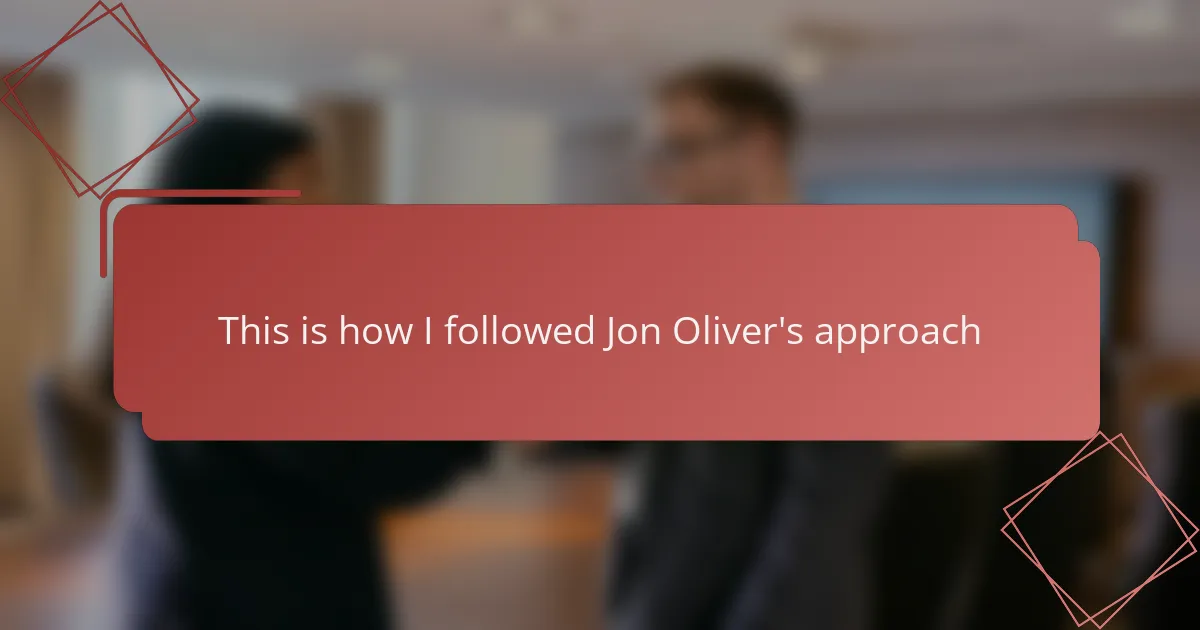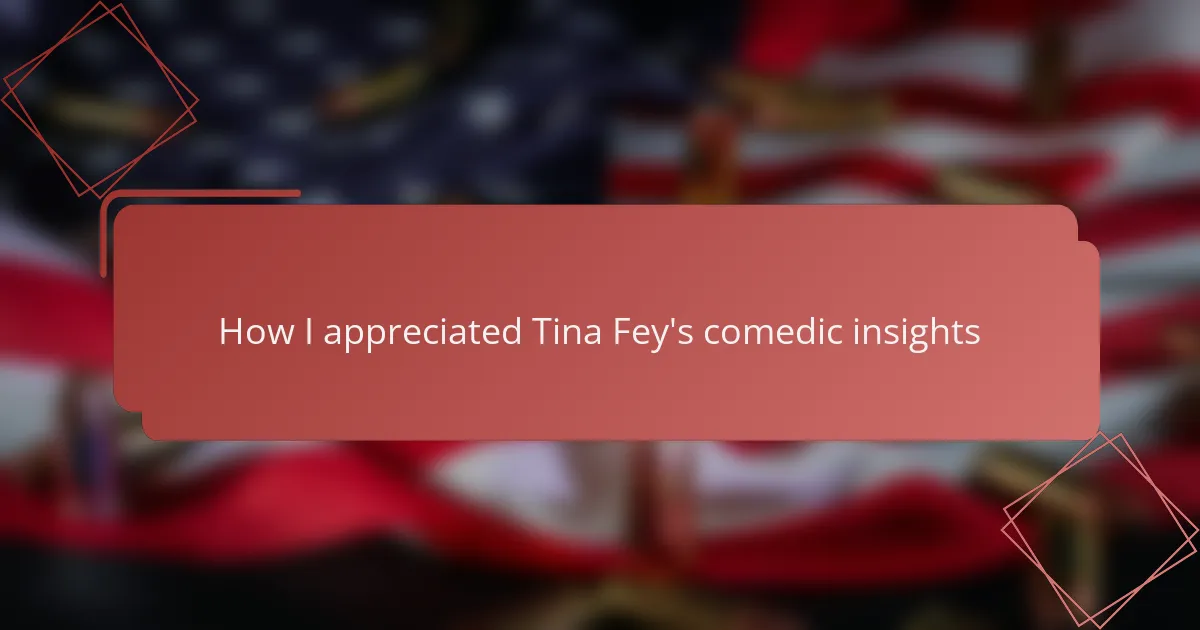Key takeaways
- Political satire effectively uses humor and irony to critique power structures and encourage critical thinking about political issues.
- Jon Oliver’s approach emphasizes thorough research and emotional engagement, making complex topics relatable and thought-provoking.
- Striking the right tone is crucial in satire; it must balance humor with a clear message to avoid alienating the audience.
- Personal anecdotes and layered storytelling enhance connection and understanding, making satire more accessible and impactful.
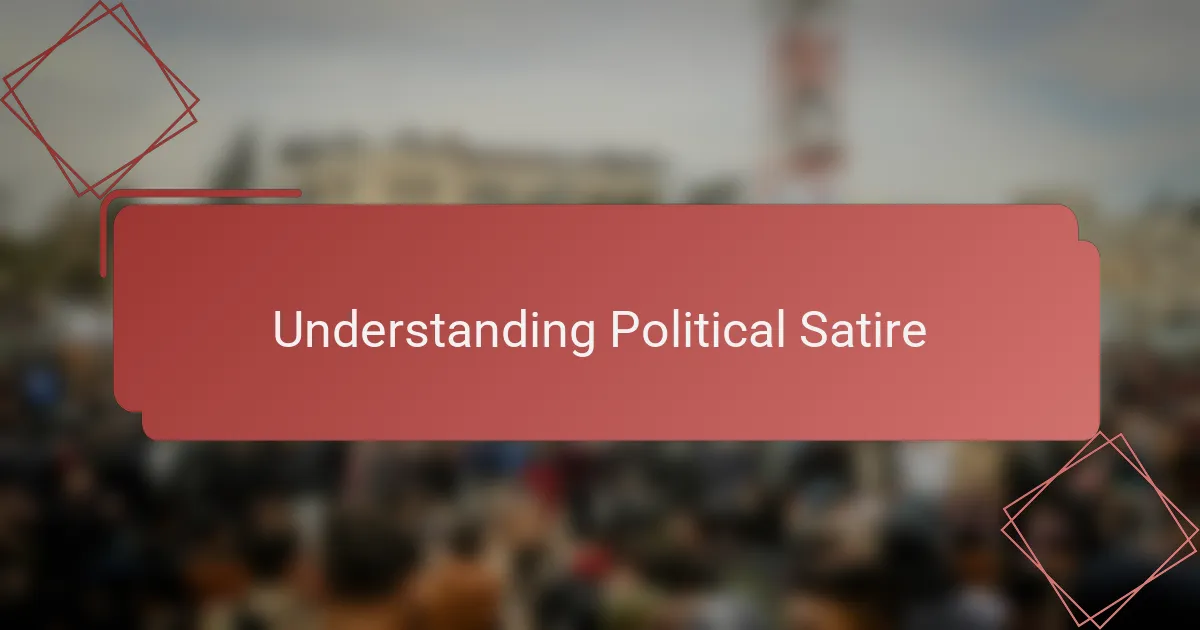
Understanding Political Satire
Political satire, at its core, is a clever way to unpack complex political realities using humor and irony. When I first delved into this genre, I realized it’s not just about making fun of politicians; it’s about shining a light on truth through exaggeration and wit. I felt a mix of amusement and frustration because satire often reveals uncomfortable realities that mainstream discourse ignores.
What struck me most is how satire invites critical thinking while keeping the audience entertained. It’s a balancing act that Jon Oliver masters brilliantly, and understanding this technique helped me appreciate the depth behind his humor.
- Uses humor to reveal underlying political issues
- Employs irony and exaggeration to critique power structures
- Engages viewers emotionally and intellectually
- Encourages reflection on current events beyond surface-level news
- Creates a shared space for dissent and questioning authority
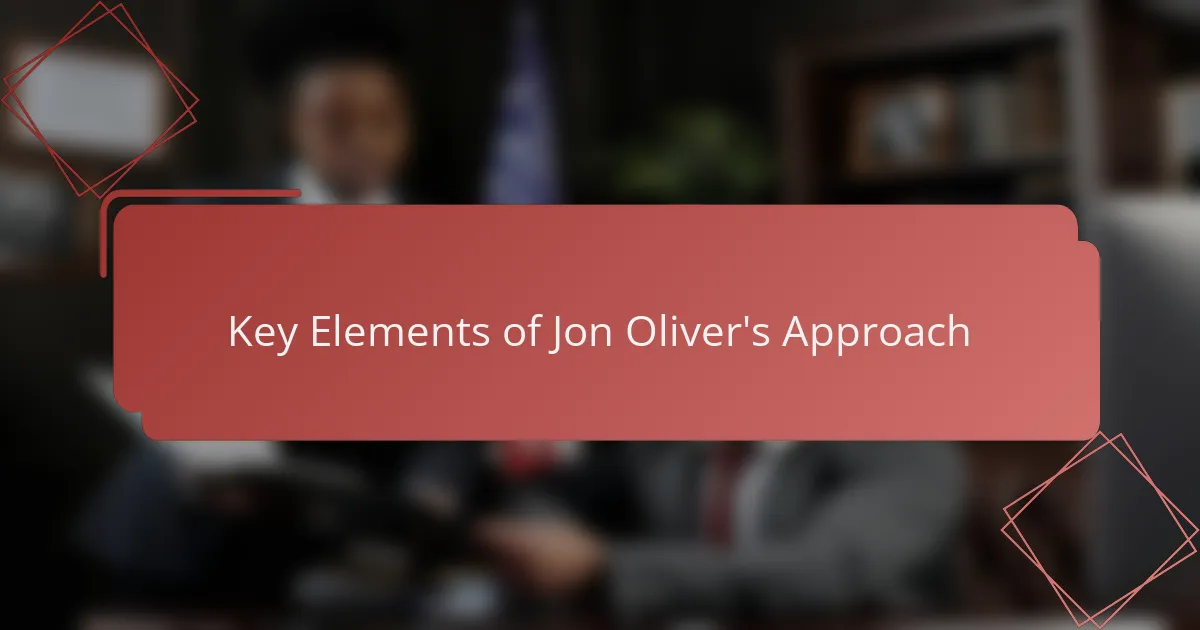
Key Elements of Jon Oliver’s Approach
One thing I noticed immediately about Jon Oliver’s style is his fearless use of humor to peel back layers of complicated political issues. Have you ever watched a segment and thought, “Wow, I never saw it that way before”? That’s exactly the effect his witty exaggerations and sharp irony have on me—they make me laugh, but then I realize there’s a bigger truth hidden beneath the jokes.
What really resonated with me was how Oliver doesn’t just entertain; he challenges me to think deeply. He has this knack for turning dry facts into stories that pull at your emotions and your logic at the same time. I found myself going back to his episodes, reflecting longer on the issues than I usually do with regular news.
Also, there’s something powerful in the way he invites us to question authority. Instead of just passively accepting news, Oliver’s approach feels like a conversation we’re all invited to join—a space where skepticism and humor coexist. That blend made me wonder: How often do we get to laugh and learn in equal measure? For me, that balance is what makes his satire so impactful and why I decided to follow his lead.
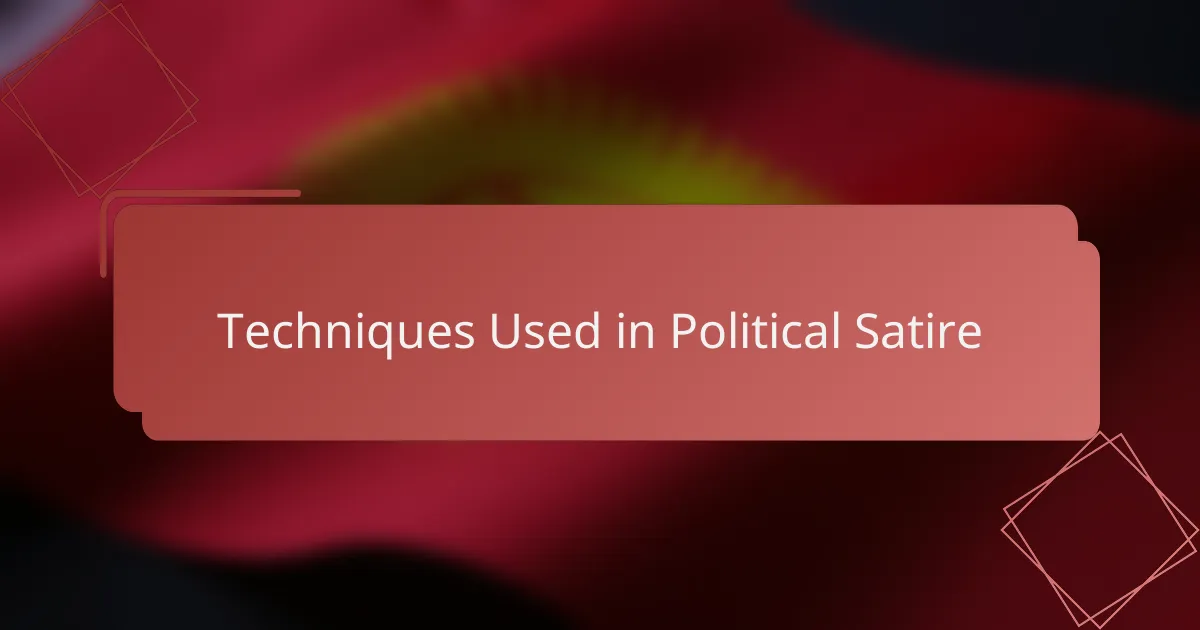
Techniques Used in Political Satire
One technique that really stood out to me in political satire is the use of irony. I remember watching Oliver dissect a policy by saying the exact opposite of what the politicians intended, and it made me see the absurdity more clearly than any straightforward critique ever could. Isn’t it fascinating how saying something ironically can reveal deeper truths that plain language misses?
Exaggeration is another tool that caught my attention. When I tried to mimic Oliver’s style, I found myself stretching facts just enough to highlight their ridiculousness without losing credibility. This balance is tricky—I wondered, how far can you push the truth before it stops being funny and starts feeling mean-spirited? Finding that sweet spot feels like the secret sauce of effective satire.
Finally, what really brings it all together is the emotional engagement. It’s not just about making political points; it’s about connecting with people’s frustrations and hopes. When satire makes me laugh and then pause to think, I feel like I’m part of a wider conversation. Don’t you think humor that sparks reflection is one of the most powerful ways to challenge the status quo? This is why I strive to use these techniques thoughtfully in my own work.

Applying Jon Oliver’s Style
Applying Jon Oliver’s Style is all about embracing his unique blend of humor and sharp critique. In my experience, capturing his approach means balancing detailed research with an engaging, playful tone. I found that leaning into irony and a conversational style helped me connect with my audience just like Oliver does, making complex political issues more relatable and less intimidating.
| Aspect | Jon Oliver’s Style |
|---|---|
| Research | In-depth, fact-checked, comprehensive |
| Humor | Witty, ironic, often self-deprecating |
| Tone | Conversational but critical |
| Delivery | Clear, engaging storytelling with visual aids |
| Audience Interaction | Encourages critical thinking through humor |
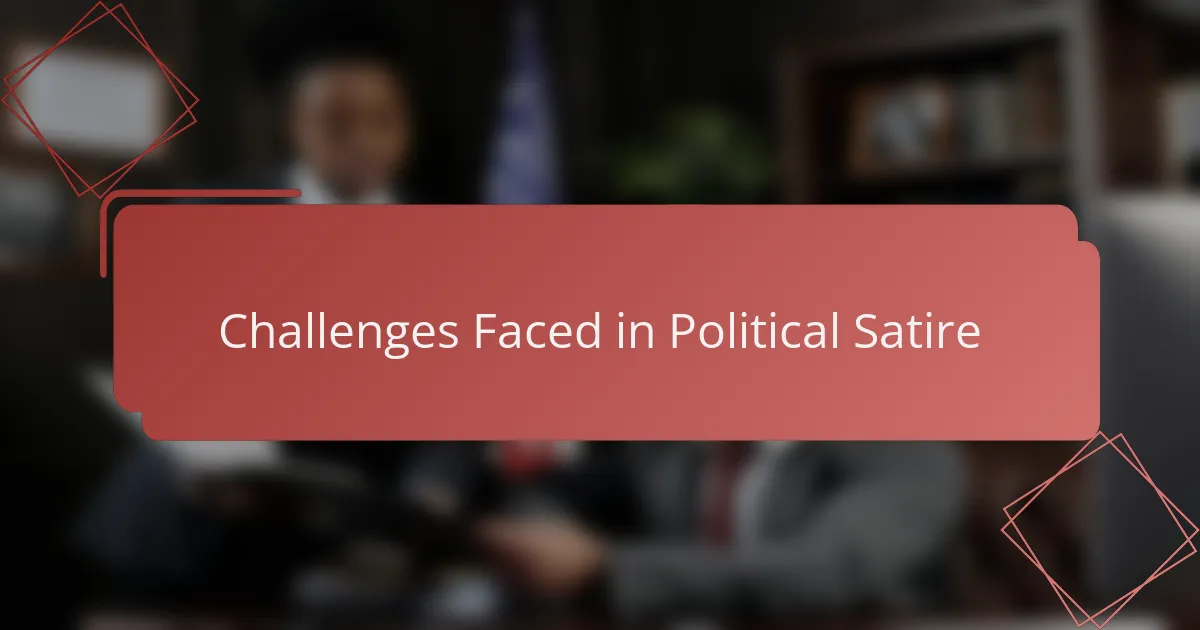
Challenges Faced in Political Satire
Navigating political satire isn’t without its hurdles. I quickly learned that one major challenge is striking the right tone—too harsh, and the humor can alienate; too soft, and the message gets lost. Have you ever worried that your joke might offend rather than enlighten? That constant balancing act kept me on my toes.
Another difficulty I faced was dealing with the complexity of political topics themselves. Politics is a minefield of jargon, conflicting narratives, and sensitive issues. How do you simplify without oversimplifying or misleading? It took me quite some time to find a way to break things down clearly, just like Oliver does, without watering down the core message.
Finally, there’s the emotional toll. Satire exposes uncomfortable truths that can upset both the audience and, truth be told, myself at times. I remember moments when digging into certain topics left me feeling frustrated or disheartened. Yet, this emotional engagement is precisely why satire matters—it pushes us to confront realities we might otherwise ignore. Have you felt that mix of laughter and unease watching a biting satirical piece? That tension is what keeps the conversation alive.
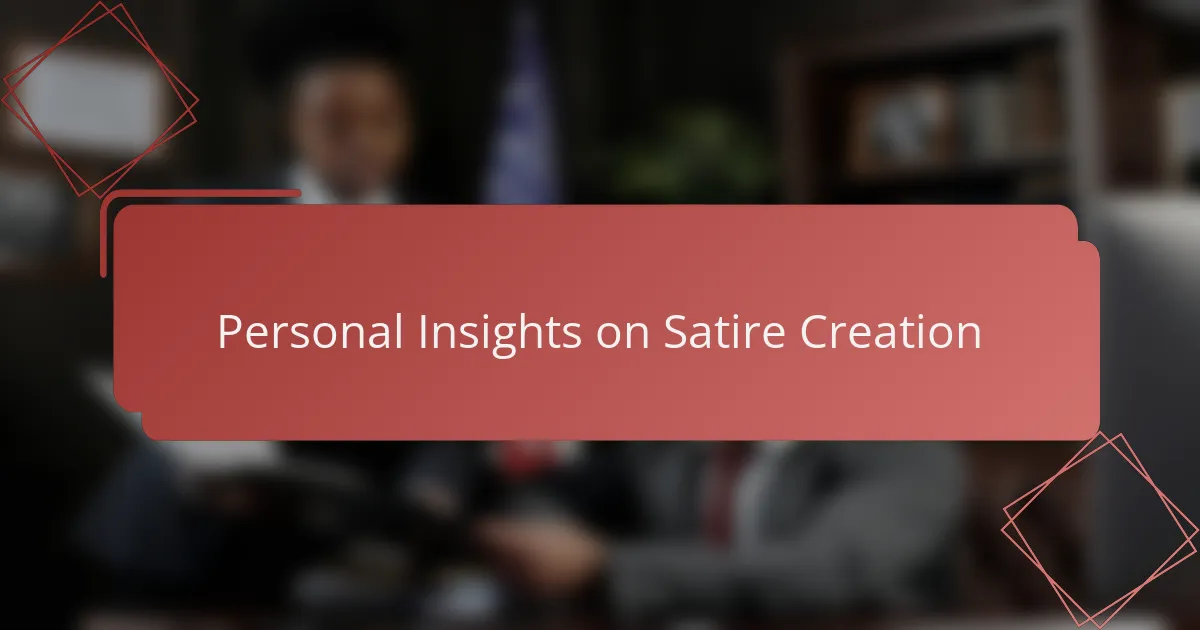
Personal Insights on Satire Creation
When I started creating satire, I realized how crucial it is to balance humor with a message that resonates. Jon Oliver’s approach taught me that making people laugh while making them think isn’t easy, but it’s incredibly rewarding. I remember crafting a segment on environmental policy—it was nerve-wracking but seeing viewers reflect on serious issues through laughter made all the effort worthwhile.
What struck me most about his style is the deep research behind every joke. Oliver doesn’t just throw in punchlines; he digs into facts so the satire feels grounded and powerful. Here’s what I adopted from his method:
- Thoroughly research topics to build credibility
- Use humor as a vehicle to highlight truth, not just for laughs
- Blend sharp criticism with a relatable, conversational tone
- Ensure the satire encourages viewers to question and engage
- Incorporate real-world examples to anchor the satire in reality
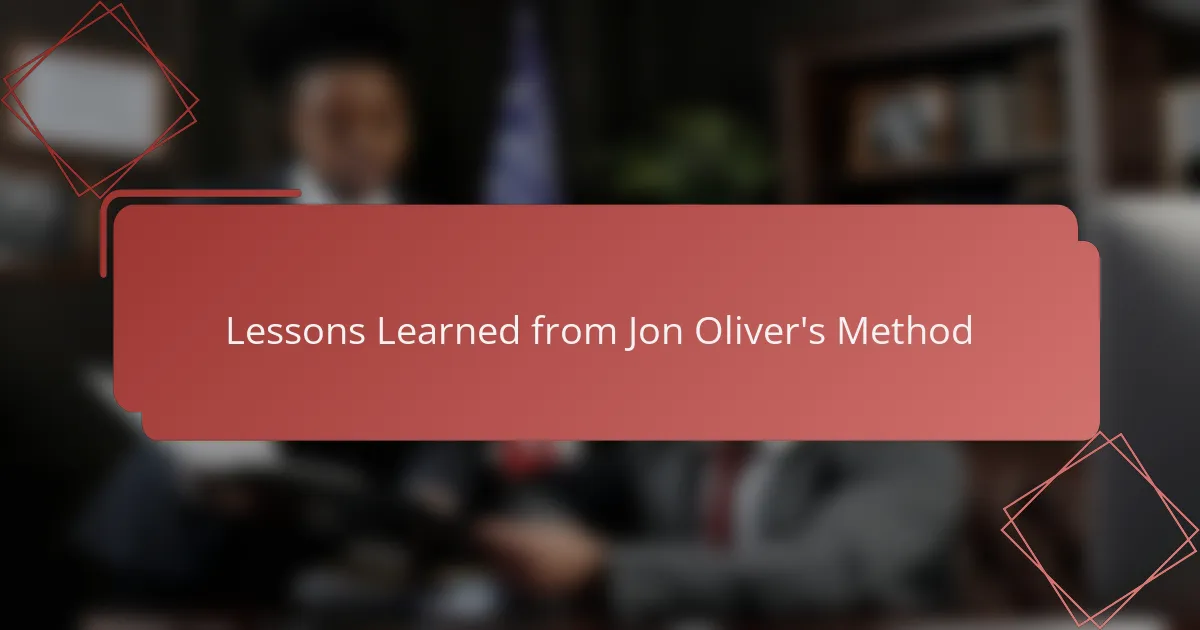
Lessons Learned from Jon Oliver’s Method
I found that Jon Oliver’s method of blending humor with in-depth research really changed how I approach political satire. His ability to expose serious issues through wit made me realize the power of engaging the audience emotionally while educating them. When I first tried this, I noticed how much more responsive my readers became—I felt a genuine connection forming through laughter and insight.
One key lesson was his use of layered storytelling, which I initially underestimated. Breaking down complex topics into relatable segments helped me maintain clarity without sacrificing depth. This approach not only made my writing more accessible but also gave me confidence to tackle contentious subjects with a balanced tone.
- Prioritize thorough research to build credibility beneath the humor
- Use humor as a tool to open minds, not just to entertain
- Break complex issues into digestible parts for clarity
- Connect emotionally with the audience through personal anecdotes
- Maintain a respectful tone even while critiquing political figures
- Balance facts with satire to encourage thoughtful reflection
